- Home
- Equipment Reviews
-
Amplification Digital Integrated Mono Block Preamplifier Phono Solid State Tube Analog Sources Cartridges Tape Tone Arms Turn Tables Digital Sources Digital Disc Players DACs Music Servers Streaming Music Services
-
Accessories Power Conditioners Room Accoustics Racks & Stands Audio Software Other iPod iPod Speakers iPod Headphones iPod Transports Headphones Over Ear On Ear In Ear Headphone Amplifier
-
- Audio News
- Event Reports
- California Audio Show, San Francisco
- Consumer Electronics Show
- T.H.E. Show
- Rocky Mountain Audio Fest
- AXPONA
- Salon Son & Image
- Hi-Fi Show & AV Expo
- High End
- Lone Star Audio Fest
- Capital Audio Fest
- TAVES - Toronto Audio Video Entertainment Show
- AK Fest
- Home Entertainment Show
- New York Audio $ AV Show
- Open House Events
- Spotlight
- Music
- The Columns
- 2024 California Audio Show
Latest Reviews & Audio News
-
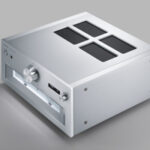
Technics SU-R1000 reference stereo integrated amplifier Review
(April 5, 2024) -
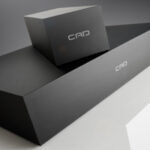
Computer Audio Design GC 1.1 & GC3.1 Ground Control external grounding systems Review
(April 5, 2024) -

Andy Grove of Audio Note UK on IO LTD
(March 23, 2024) -
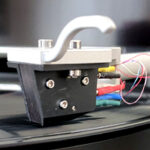
Audio Note UK IO Limited field-coil cartridge system Review
(March 26, 2024) -

EMM Labs MTRX monoblock Input Board Upgrade Review
(March 7, 2024) -

May 2018 Sibelius Violin Concerto concert video via Berliner Philharmoniker Digital Concert Hall app
(February 16, 2024) -

Aurender N20 Ultra High Performance digital output network transport Review
(February 15, 2024) -
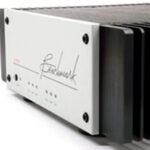
Benchmark Media AHB2 THX AAA stereo amplifiers Review
(January 18, 2024) -

Nelson Pass Interview 2023
(December 6, 2023) -

Interview with singer, pianist Fiona Joy Hawkins and singer, violinist Rebecca Daniel at 2023 CAS
(October 10, 2023) -

Aurender A20 reference analog output network player Review
(September 27, 2023) -
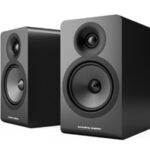
Acoustic Energy AE100² bookshelf speakers Review
(September 11, 2023) -
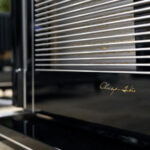
Clarisys Audio Minuet planar ribbon speaker system Review
(August 19, 2023) -

Clarisys Audio Interview
(August 7, 2023) -
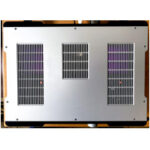
Bricasti Design M21 dual-mono DSD, Ladder and Delta Sigma DAC Review
(December 9, 2023)
-
Categories
-
Amplification Digital Integrated Mono Block Preamplifier Phono Solid State Tube Analog Sources Cartridges Tape Tone Arms Turn Tables Digital Sources Digital Disc Players DACs Music Servers Streaming Music Services
-
Accessories Power Conditioners Room Accoustics Racks & Stands Audio Software Other iPod iPod Speakers iPod Headphones iPod Transports Headphones Over Ear On Ear In Ear Headphone Amplifier
Site Sections
Copyright ©1996-2024 All Rights Reserved.
Popups Powered By : XYZScripts.com

I first received an early production Merrill Williams R.E.A.L. 101 turntable System from George Merrill for evaluation in June of this year. It did not take much time for me to realize three things:
This turntable represents a complete re-think in belt-driven turntable design,
This is no re-hash or derivative of the famous Merrill Heirloom or Merrill-Scillia MS21.
This turntable may very well be a game changer.
As such, I feel it important that before we start the journey down the road of describing the Merrill- Williams R.E.A.L. 101, we should first get a bit into the head of the man chiefly involved in the design.
The following are excerpts from conversations and emails I have had with George Merrill over the past several months.
Ray Seda: George, what event or series of events compelled you to jump back into the saddle and begin work on the R.E.A.L. 101?
George Merrill: I love music. I believe that the absolute best retrieval of a performance is a must for anyone with a passion for the musical expression. The beginning of the reproduction chain is the turntable. If this is compromised then the system output cannot be true. I am always thinking about new ways to improve things. The turntable is my engineering passion. I had the idea for this design several years ago. After speaking to one of my friends (Robert Williams) who was involved in music reproduction for years in many ways the 101 was born.
RS: In this endeavor, you have taken on a new design partner in Robert Williams. What is his background and how did you come to the realization that your backgrounds were complementary for this design endeavor?
GM: Robert Williams is my friend and a great thinker and engineer, and has a background in record manufacturing (pressing) and speaker design. He shares the passion for music and design. We worked together to bring the 101 to fruition.
RS: How has Mr. Williams impacted the course taken in the design and execution of the R.E.A.L. 101?
GM: Every step in the execution of the design was collaboration between the two of us.
RS: During our many conversations, you have mentioned that the speed controller utilized for the R.E.A.L. 101 was custom designed by Mr. Ron Sutherland (father of the Martin Logan CLS electrostatic driver and Martin Logan Monolith speaker, as well as designer of innovative preamplifiers and phono stages under his own Sutherland Engineering Design Company, and the inventor and marketer of the now famous and invaluable tool called the Sutherland timeline). How did Ron’s expertise in power supplies and speed controller technology influence the evolution of the R.E.A.L. 101?
GM: My electronic design background is dated. Many new microprocessor chips and IC amplifiers have appeared on the scene in the last 25 years. As one of the first Martin Logan dealers, I knew of Ron’s capability as an engineer. He is on top of today’s technology. The logical approach to the motor drive control design was to have him design the circuit to our specifications.
RS: George, the R.E.A.L. 101 is a significant departure from the Heirloom in terms of how it manages and dissipates energy. Most notable is the fact that this is not a suspended design. At what point in the conceptualization of the R.E.A.L. 101 did you realize that you were going to be working on a record playback system that did not involve springs nor a floating sub-chassis? Was there a single event or fact that heavily influenced that decision?
GM: This was a given from the outset due to the mass of the elastomer. The plinth is suspended with inverted hemispherical feet thus mimicking the spring suspension chassis. The plinth is the suspended chassis. (“Suspended Plinth”).
RS: Is the custom designed and built Hurst motor the only part in the R.E.A.L. 101 that was brought over from your legacy products?
GM: The motor and the copolymer pulley that were used in the Heirloom are used in the 101. The motor is of a special design that was constructed to my specifications. The reason this motor is used is as follows: quite, just enough torque to pull the platter and absolute reliability. Thousands of these motors have been in operation for over 30 years.
RS: Given the fact that the R.E.A.L 101, or as I would love to refer to it as, The Rubber Turntable, is such a departure from the Heirloom or the Merrill Scillia work, did you ever consider a drive method other than belt drive?
GM: No. I have written a paper on turntable drive systems explaining the reasons for only considering the simple single belt drive.
RS: How much time has it taken to move from the concept of the R.E.AL. 101 to final product form?
GM: Over two years
RS: Is there any aspect of the R.E.A.L. 101 that you feel is still somewhat of a compromise from yours and Robert William’s vision of the ultimate realization of your concept?
GM: No
RS: George, thank you once again for the opportunity and access. It has been a real pleasure in learning first-hand about the R.E.A.L. 101 and hearing the fruits of your vast experience in the area of vinyl playback. I certainly look forward to the continued evolution of your forward thinking designs.